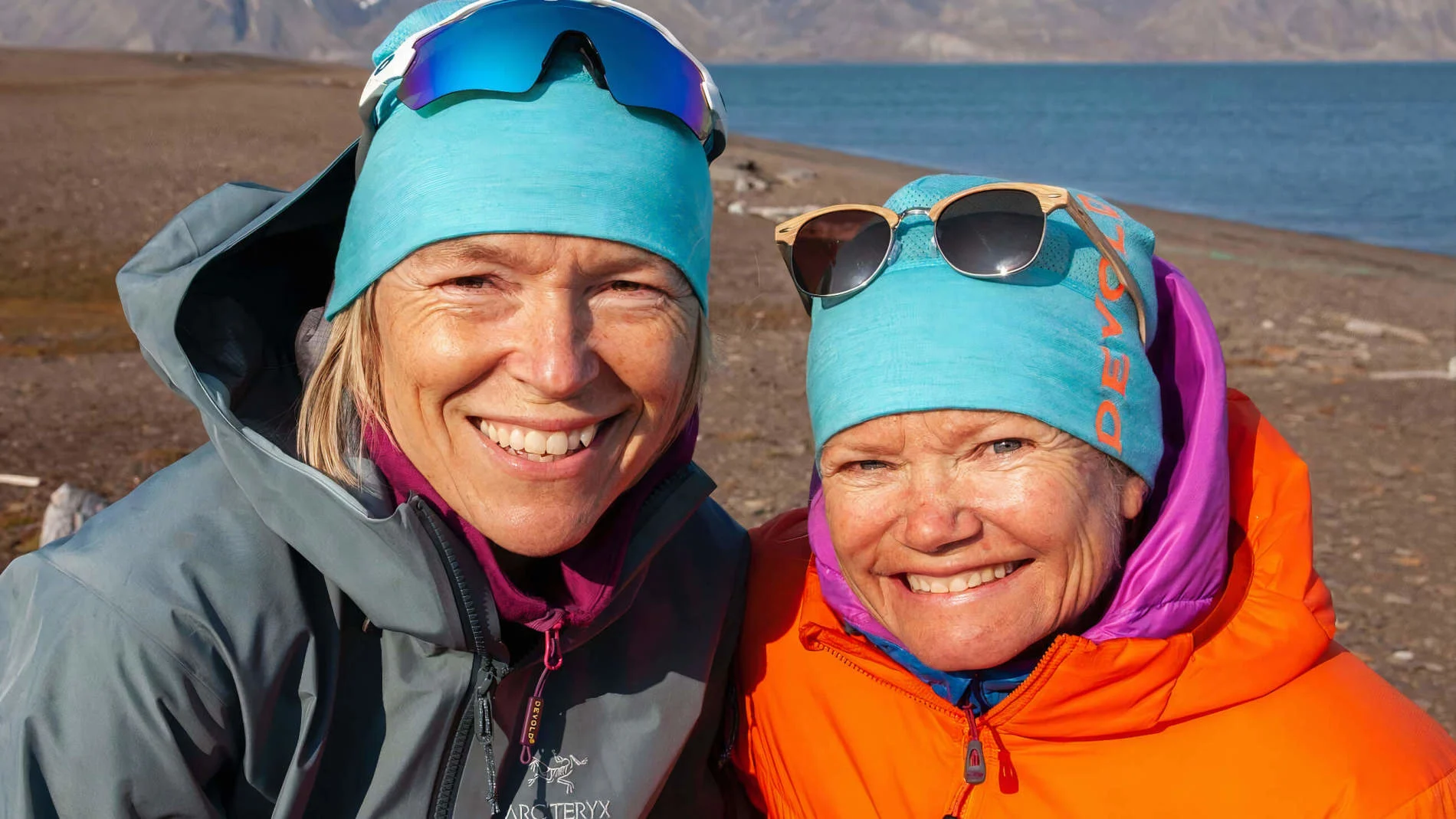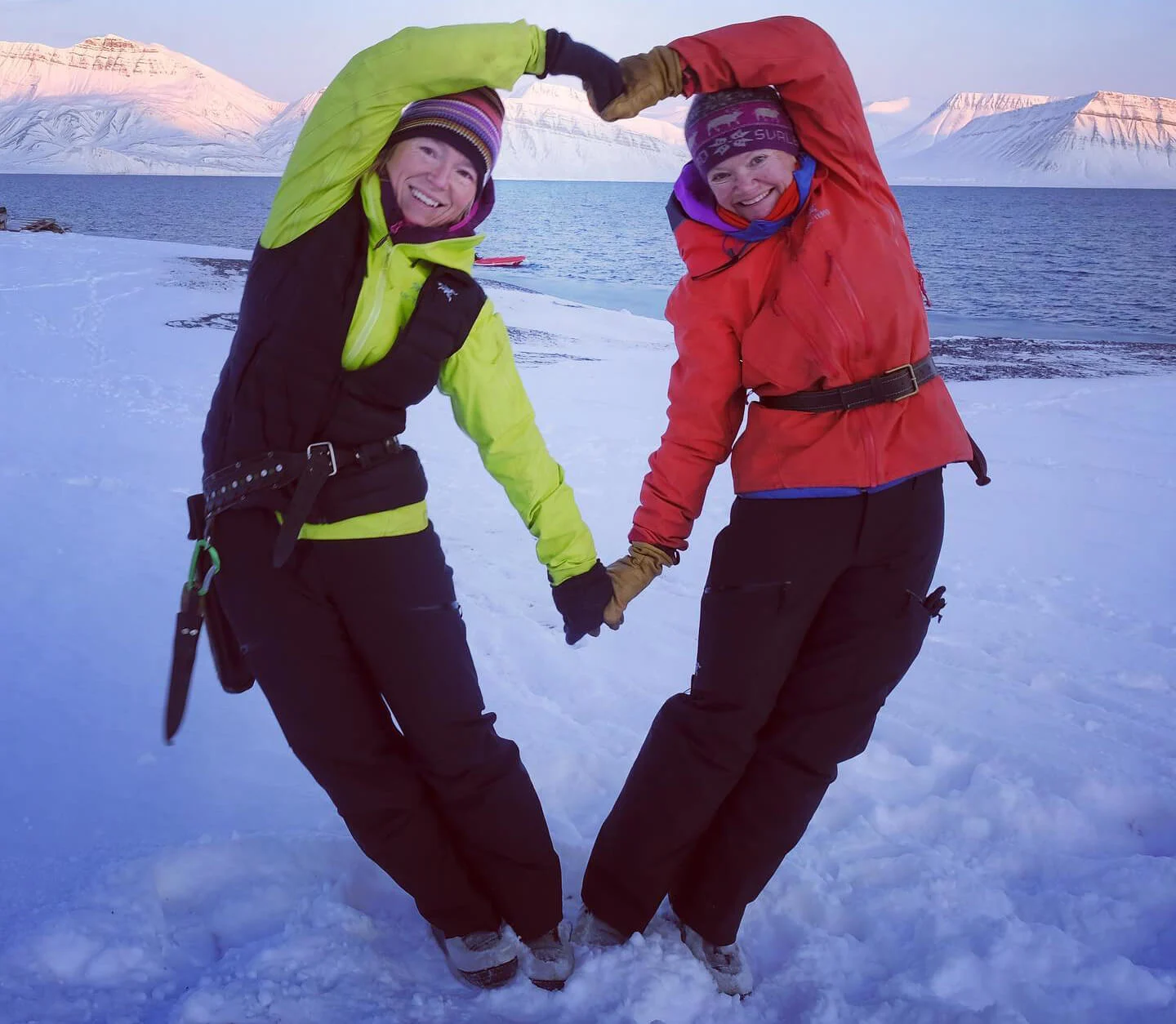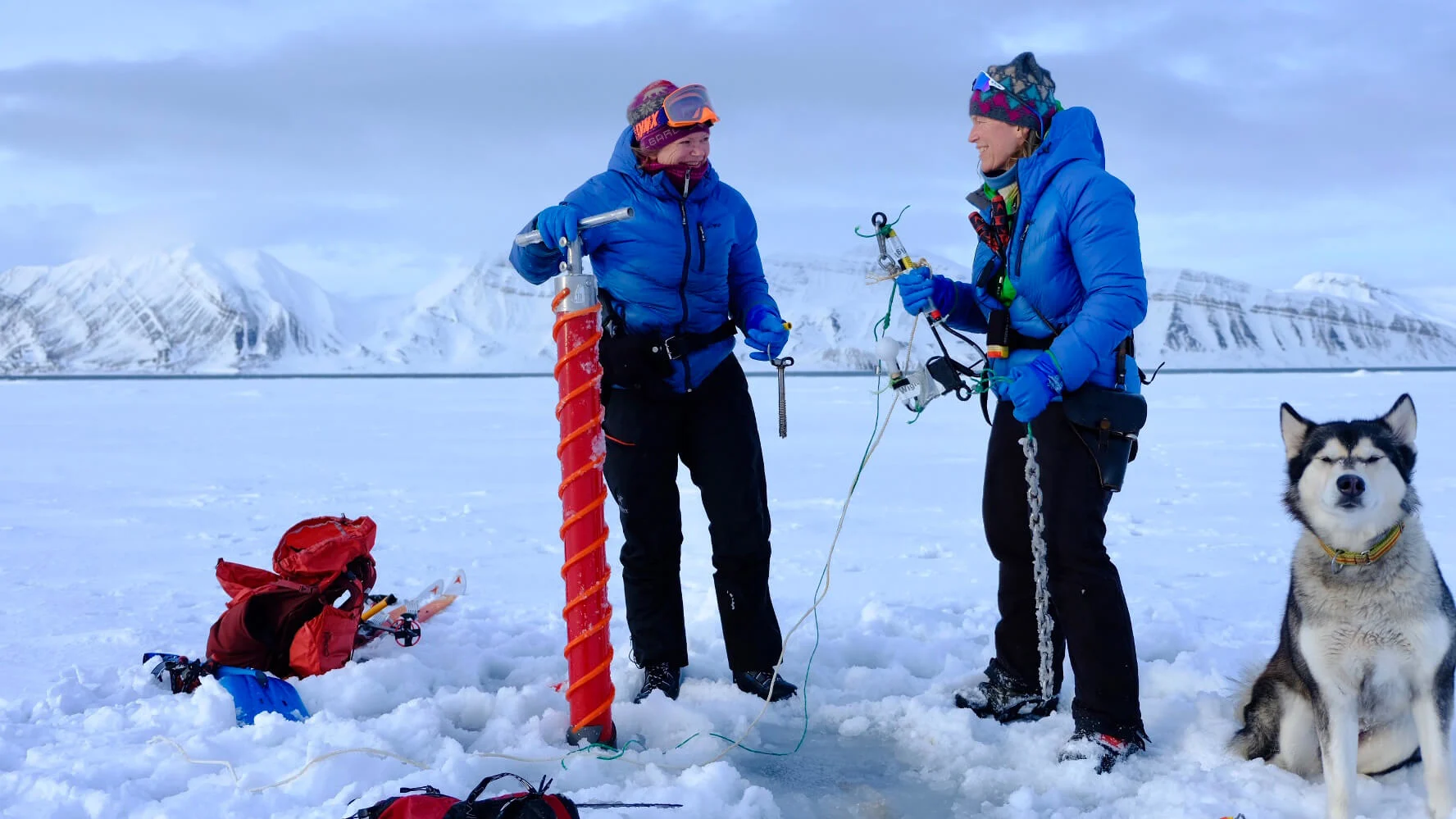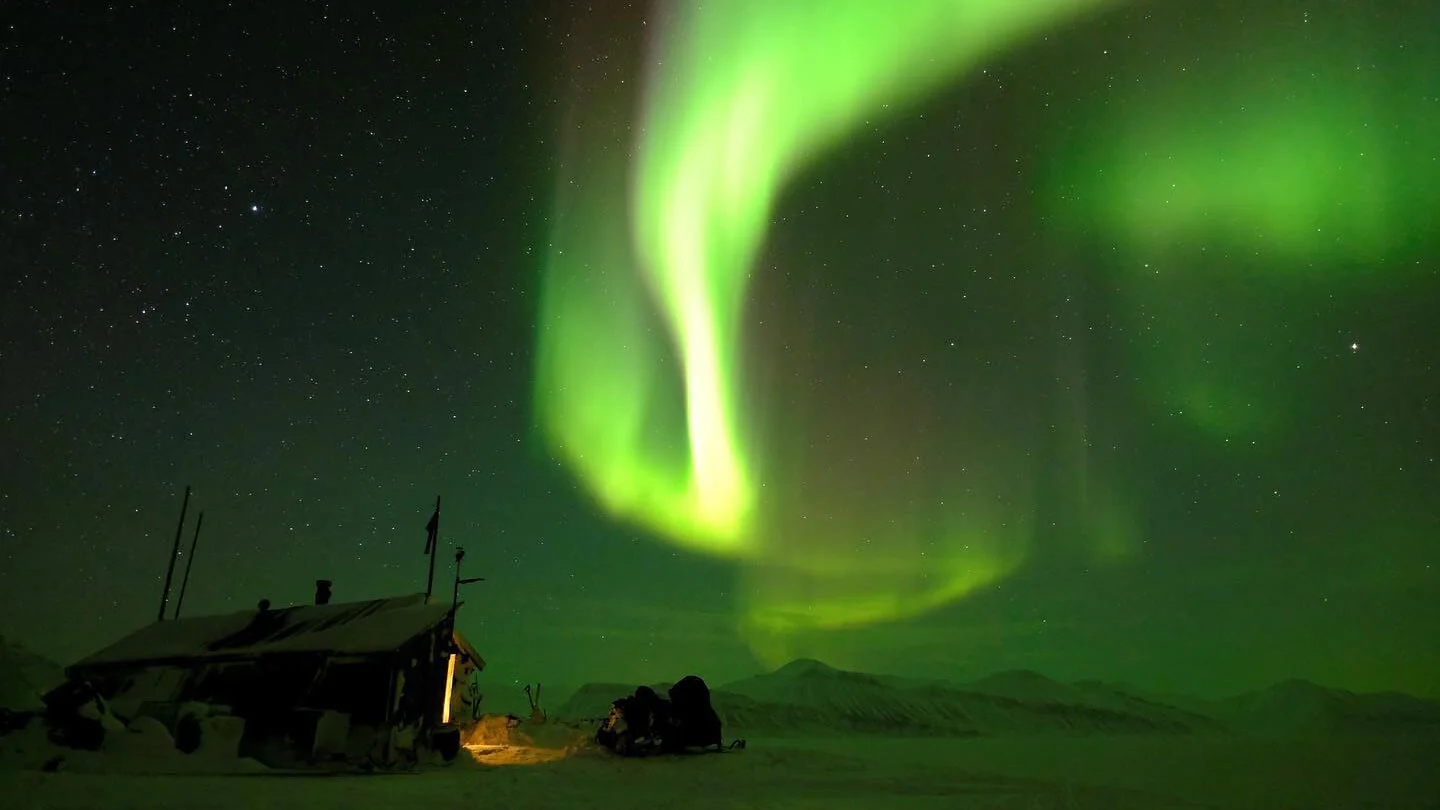
These two women made history by overwintering alone in a tiny Arctic hut
The duo behind Hearts in the Ice hope to travel to northern Canada for their next citizen science adventure.
It all started with a polar bear ring.
On a trip to Alaska in 2014, Norwegian-born Canadian Sunniva Sorby and Norway’s Hilde Fålun Strøm accidentally met each other on a bus to go see a glacier they had seen already.
“It is the last excursion available in this day of adventure. And I signed up late, and she missed the one she was supposed to go on,” Sorby, who emigrated to Canada at the young age of one, told The Weather Network about the random series of events.
“I mean sometimes you can't make this up. We both have the same polar bear ring, carved from an artist in Sisimiut on the West Coast of Greenland and bought at different times. I've never ever — and neither had she — met anyone with the same ring as me.”
And then Fålun Strøm offered Sorby a piece of her Norwegian chocolate bar, and there was an instant connection. What the self-proclaimed “soul sisters” couldn’t know then was that chance meeting would lead them on an adventure that is still underway today.
They would later form Hearts in the Ice, which has the goal of collecting citizen science data and sharing knowledge about the climate crisis impacts in the Arctic.

The pair have formed an incredible bond with each other and the nature that surrounds them. (Hearts in the Ice)
They both had a “shared passionate love of the polar regions.” Sorby was the last — and youngest — member to be selected to a history-making ski trip to the South Pole.
Fålun Strøm calls the Arctic home, but witnessed a devastating avalanche that changed her life.
“There was an avalanche right behind my house and it destroyed and crushed 12 of my neighbor's houses and we were digging for 17 people that were buried inside their homes. Snow just filled up their homes … and tragically a two-year-old girl and a 43-year-old man died,” she told The Weather Network.
“So that was … a real wake up call for me. I had already seen for almost two decades that things are really changing up in the Arctic. And that day, I decided I needed to make a contribution.”
Making history
Fålun Strøm would later be in charge of a cruise expedition that utilized citizen science, but wanted to use her knowledge and energy to be part of the solution not the problem.
READ ALSO: Most of humanity just experienced the warmest October on record
“I think its a kind of strange to say this, but we both had really good full-time jobs and we quit them,” said Sorby about the decision to dedicate themselves to Hearts in the Ice.
Recently they made history as the first women to overwinter in a 20-square-metre hut called Bamsebu in the remote Norway wilderness of Svalbard without men.

The hut was built back in the 1930s for beluga hunting in the summer — so there is no insulation or running water. (Hearts in the Ice)
“That's not for the faint of heart,” said Sorby about the experience living in such close quarters, having to cut wood for heat and chip ice for water.
They even had to follow each other outside in case they ran into their neighbours, who happen to be polar bears and other Arctic wildlife.
But it also allowed them to form an incredible bond, along with their trusty malamute-husky Ettra.

Sorby and Fålun Strøm collect samples while Ettra supervises their work. (Hearts in the Ice)
They were there collecting data for scientists around the world — including NASA and the Norwegian Polar Institute — during the pandemic. The nine-month adventure turned into 19 months when there was essentially no one to pick them up. The pandemic also made it difficult for other climate scientists to get out in the field, so they decided they could help on that front too.
They say the reality is there aren't enough formal scientists out there to gather all the data we need to address climate change.
An inspiration for change
During their isolated stay, they kept busy, collecting data and hosting livestreams for classrooms around the world. They partnered with many organizations, including Polar Bears International to help them get the word out.
READ ALSO: Churchill aims to be the world’s first “polar bear safe community”
They’ve also worked with a lot of female researchers in what can often be a male-dominated area.
“I think more and more women's voices are being heard in the scientific community. And are we ever proud to have been aligned with many of them through our project,” said Sorby.
And it’s being noticed too.
“We spoke to this Trafalgar School for Girls, we had one young student there that sent us this message. She was so inspired by our work,” said Fålun Strøm. “And we have got that feedback from a lot of students from all over the world, and also adults. That they see that ordinary people like us can do extraordinary things.”

Could you live in a remote cabin for 19 months? The duo behind Hearts in the Ice may have some advice for you. (Hearts in the Ice)
What’s next
The pair will appear on a global platform next year when they speak at the United Nations in November about the power of community science to affect social change.
And their next adventure is also on the horizon as they plan to go up to Canada’s Arctic in Cambridge Bay to work with Indigenous elders and local youth on a pilot project about the climate impacts the community sees on a daily basis.
READ ALSO: Polar bears fight for survival as ice disappears
“It's just the two of us with, you know, with the power of our partnerships and community to help support this,” said Sorby. “So fingers crossed.”

A look at the “entertainment” the pair had to witness while overwintering in the small Svalbard hut called Bamsebu. (Hearts in the Ice)
Thumbnail image: Hearts in the Ice was formed in 2015. (Hearts in the Ice)












